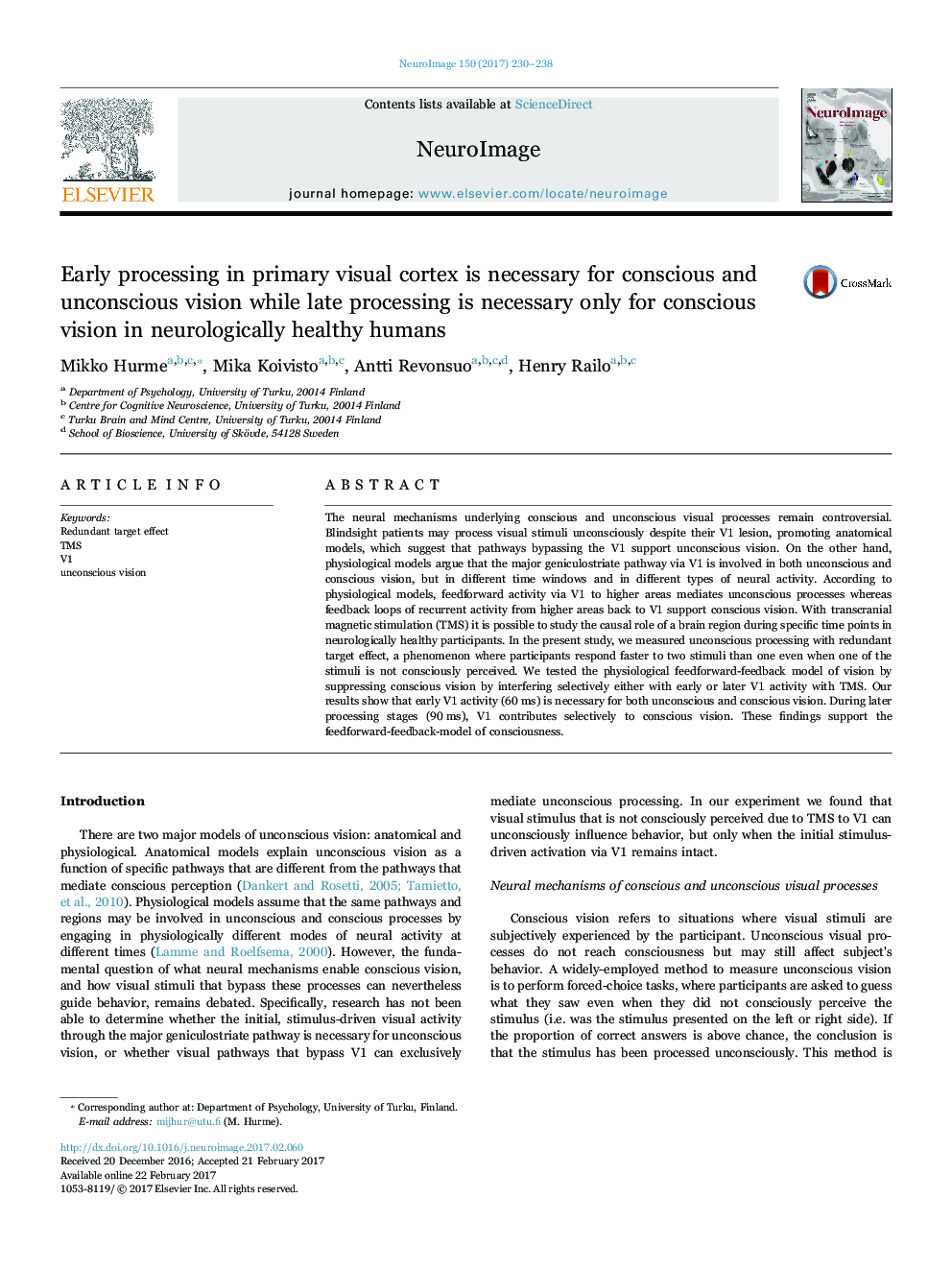| کد مقاله | کد نشریه | سال انتشار | مقاله انگلیسی | نسخه تمام متن |
|---|---|---|---|---|
| 5631638 | 1580860 | 2017 | 9 صفحه PDF | دانلود رایگان |
- Role of V1 in conscious and unconscious visual perception was studied with TMS
- Conscious perception was disrupted by TMS at both 60 and 90Â ms SOAs
- Unconscious perception was eliminated only at 60Â ms SOA
- Early stimulus-driven activity is necessary for unconscious and conscious vision
- Later time period is necessary only for conscious vision
The neural mechanisms underlying conscious and unconscious visual processes remain controversial. Blindsight patients may process visual stimuli unconsciously despite their V1 lesion, promoting anatomical models, which suggest that pathways bypassing the V1 support unconscious vision. On the other hand, physiological models argue that the major geniculostriate pathway via V1 is involved in both unconscious and conscious vision, but in different time windows and in different types of neural activity. According to physiological models, feedforward activity via V1 to higher areas mediates unconscious processes whereas feedback loops of recurrent activity from higher areas back to V1 support conscious vision. With transcranial magnetic stimulation (TMS) it is possible to study the causal role of a brain region during specific time points in neurologically healthy participants. In the present study, we measured unconscious processing with redundant target effect, a phenomenon where participants respond faster to two stimuli than one even when one of the stimuli is not consciously perceived. We tested the physiological feedforward-feedback model of vision by suppressing conscious vision by interfering selectively either with early or later V1 activity with TMS. Our results show that early V1 activity (60Â ms) is necessary for both unconscious and conscious vision. During later processing stages (90Â ms), V1 contributes selectively to conscious vision. These findings support the feedforward-feedback-model of consciousness.
Journal: NeuroImage - Volume 150, 15 April 2017, Pages 230-238
